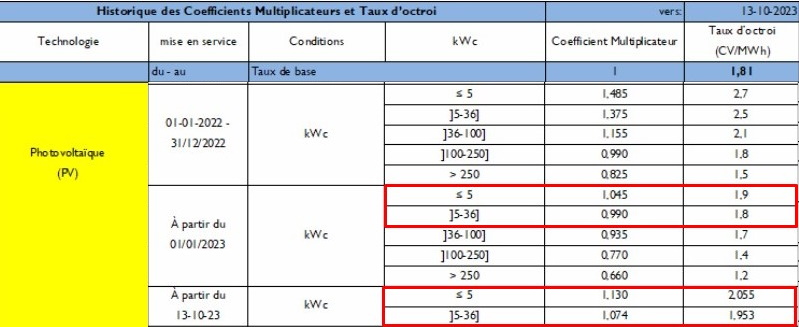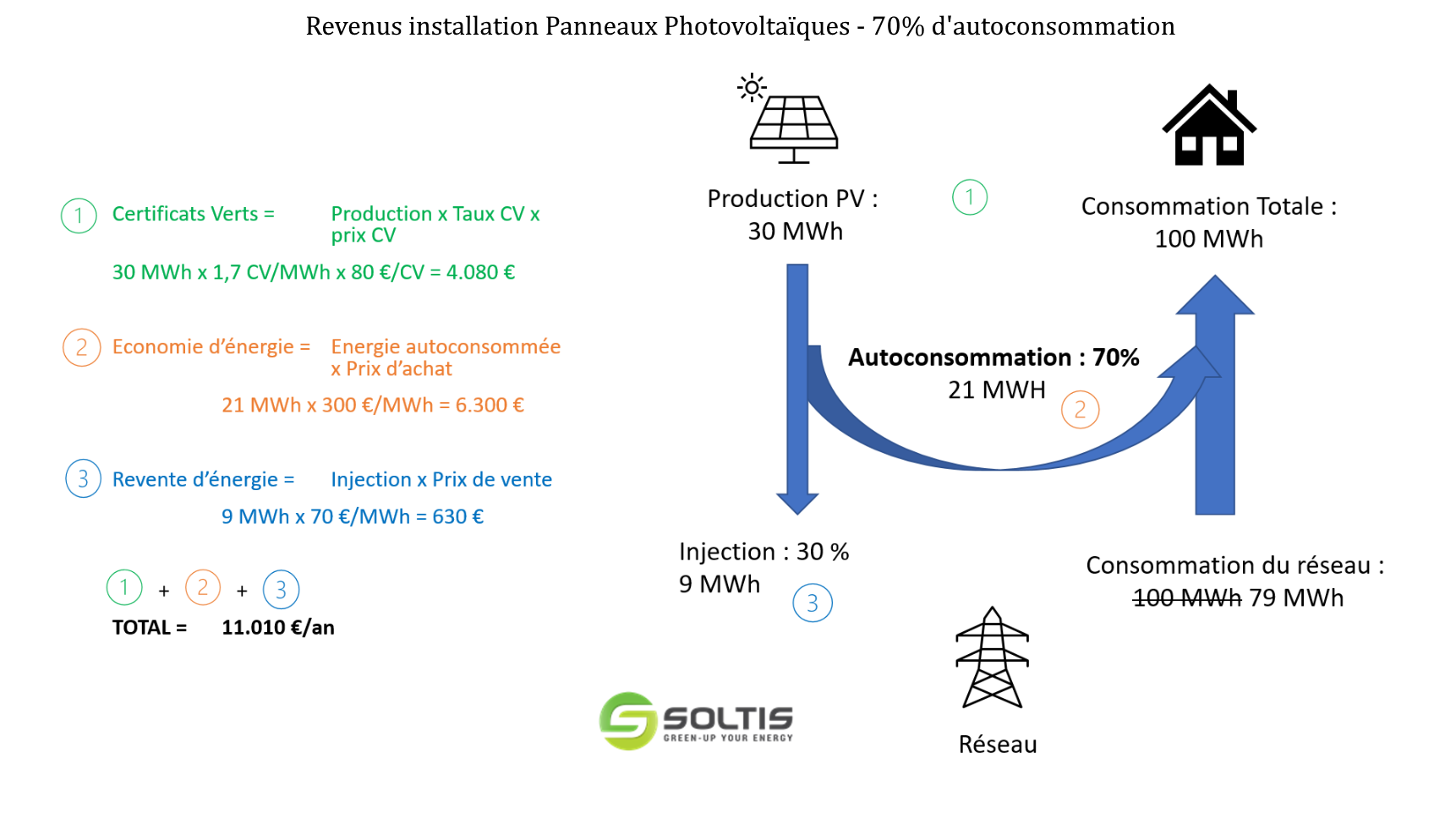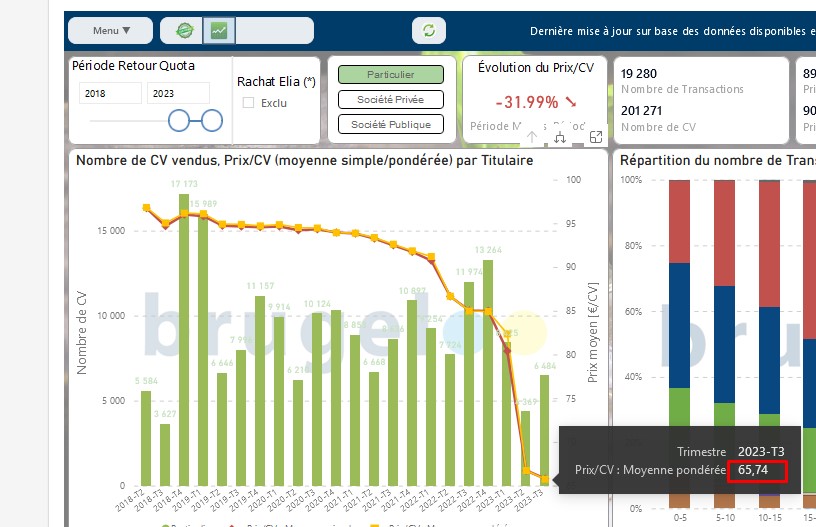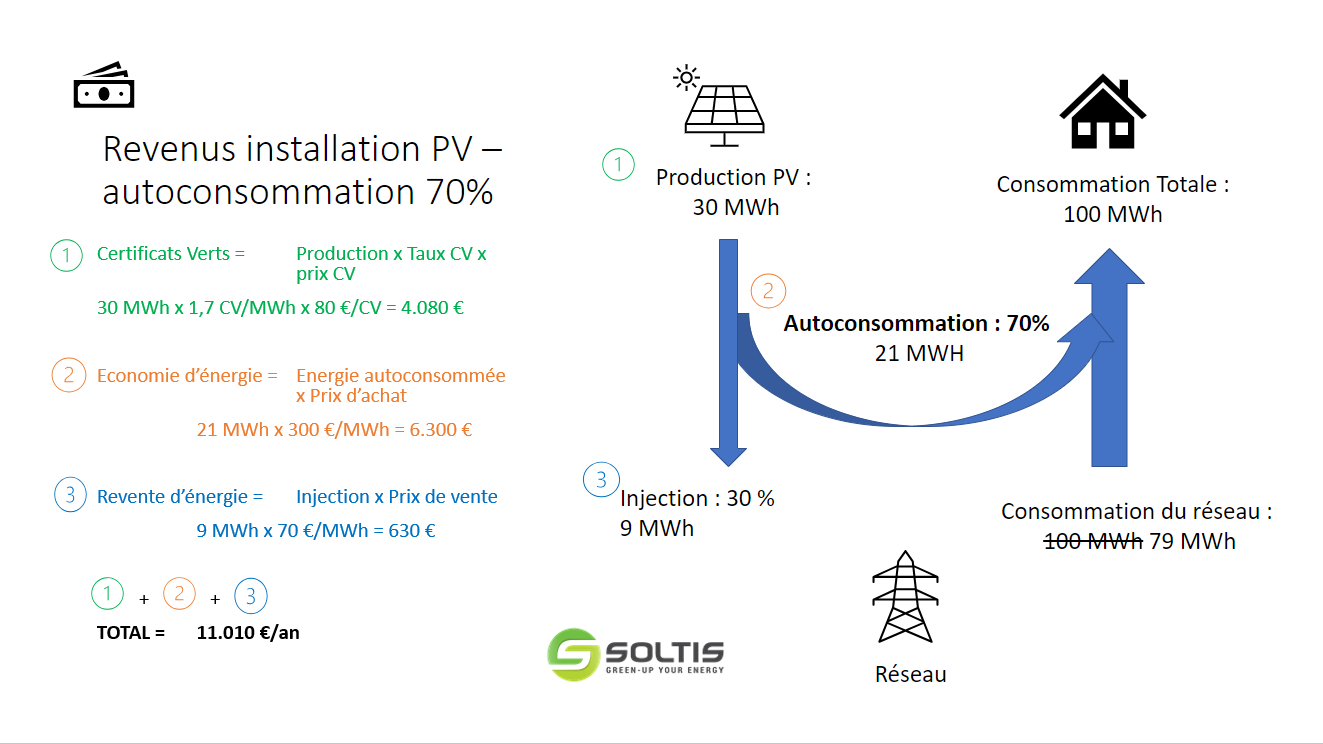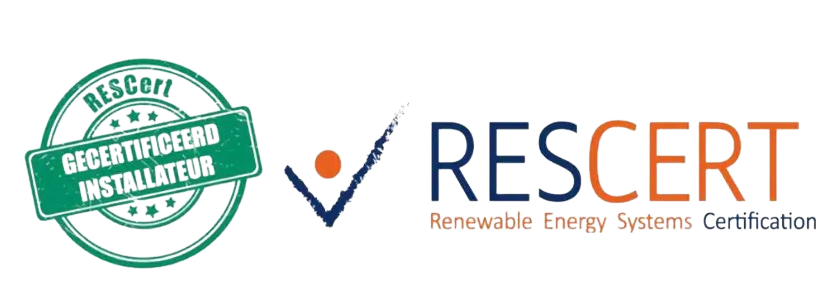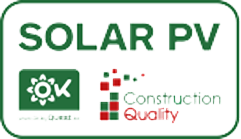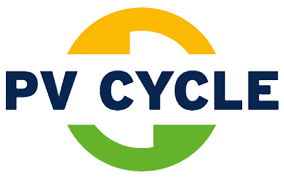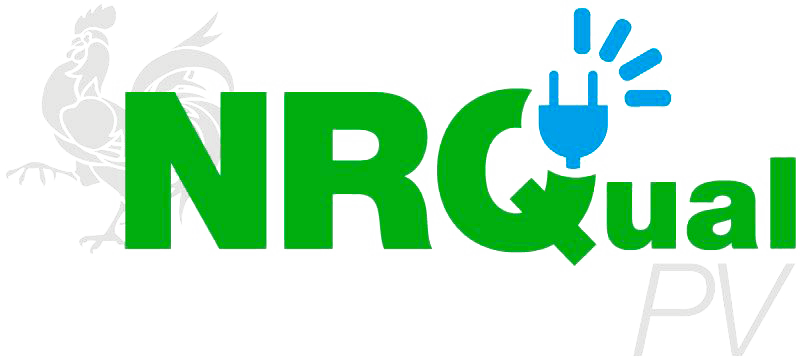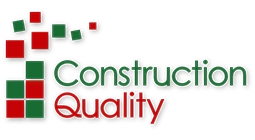01.
Why do we have to install dual-flow meters?
In Belgium, the issue of dual-flow meters, also known as smart meters, has been the subject of debate and gradual implementation. Here are some of the reasons why the installation of dual-flow meters has been encouraged or implemented in Belgium:

- Promoting renewable energies: Belgium, like many other European countries, is encouraging the transition to renewable energies. Dual-flow meters measure the production of electricity from renewable sources such as solar power, helping to support and integrate these sources into the grid.
- Consumption management: Dual-flow meters offer greater visibility of how electricity is consumed and generated. This enables authorities to better understand consumption patterns and implement policies to reduce demand at peak times.
- Encouraging self-consumption: The installation of dual-flow meters promotes self-consumption, encouraging consumers to use the electricity they produce locally. This may be particularly relevant for households equipped with solar panels.
- Advantageous pricing: Certain pricing mechanisms, such as compensation for energy produced and fed into the grid, are easier to implement with dual-flow meters. This can encourage more people to invest in renewable energy installations.
- Modernizing the electricity grid: dual-flow meters are an integral part of initiatives to modernize the electricity grid in Belgium. They enable more efficient network management, rapid fault detection and better adaptation to emerging technologies.
- Social justice : An argument that is often overlooked, non-owners of solar panels have to contribute more to improving the Walloon electricity grid than owners of solar panels if there is no dual-flow meter. If we don't take into account the actual use of the network thanks to these new meters! Indeed, there is now a prosumer royalty for economic equity.
It should be noted that the installation of dual-flow meters in Belgium has not been without controversy, and concerns have been raised about privacy, data security and other issues related to smart meter technology. Nevertheless, these meters continue to be deployed as part of efforts
to make the Belgian energy system smarter, more sustainable and, above all, fairer to other grid users who have to pay for improvements to the overall power grid even though they don't have solar panels...
02.
How to prevent inverters from stalling in Wallonia?
Inverters stall in the event of a power surge on the grid, generally due to an excess of local solar electricity injection compared to consumption.
. This is particularly true in residential areas with large photovoltaic installations and low daytime consumption.

To avoid dropping out, here are a few suggestions:
- Limiting power: Limiting the power of installations in the neighborhood could be a solution. However, this may be difficult to implement, as it would mean reducing the size of home installations.
- Reducing consumption: Encouraging energy sobriety by limiting electricity consumption, for example by reducing the use of swimming pools, could help reduce the risk of dropping out.
- Analysis of existing voltage: Examining the voltage on the network on sunny days can provide indications of the potential risk of stalling. If the base voltage is already high, there is an increased risk of stalling.
- Batteries: Although installing batteries can momentarily alleviate stalling by storing energy, it doesn't completely avoid the problem. Inverters, which are legally obliged to be connected to the grid, will trip in the event of a power surge, and battery charging will be interrupted.
Ultimately, to avoid falling behind, we need to promote energy sobriety, raise awareness of electricity consumption and strike a balance between solar production and local consumption. Investing in the power grid can be a solution, but accepting the need to reduce electricity consumption is also crucial.
03.
Is it worthwhile installing solar thermal panels?
Yes, installing thermal panels to heat water is always a good idea, because hot water is an energy-intensive resource. If you heat water with gas, you save gas, and if you use electricity, you save electricity. However, thermal panels are positioned differently from photovoltaic panels. They are further inclined and south-facing to maximize heat production, especially during cooler periods.
The argument against thermal panels lies in the fact that the current cost of gas is relatively low, which limits the savings made, given that the saving is on an inexpensive resource. What's more, the heat produced cannot be stored as easily as electricity.

In terms of energy investment,
thermal panels are beneficial, but their economic return can be less attractive.
Although financial incentives are available, maintenance of thermal panels is more complex due to pipes containing fluids that require periodic purging. In comparison, photovoltaic panels are simpler, with maintenance limited to the electrical cables.
Once installed, photovoltaic panels have a lifespan of around 25 years, with little maintenance required. Rain generally cleans the panels, and the main maintenance consists of replacing the inverter after 10 to 15 years. On less sloping flat roofs, cleaning may be necessary every 3 to 5 years.
04.
How are the solar panels connected?
The solar panels have two cables with MC4 connectors. So cables are cables at classic copper with a diameter generally 6000 mm² or 4000 mm², depending on the power of the panels. Mc4 connectors are specially designed for photovoltaic applications. These plugs snap into place, so they don't come loose with the pull, and they're watertight. So it's solid and water-resistant.

Panels are connected in series; up to 20 panels can be connected to a series of panels. and the series of panels. two wires that loop from panel to panel and back to the inverter. So there's a + side & a - side in the inverter. Then there are inverters with several series. You can add several series. There's a minimum of five-six panels in a series for enough power to get it going. So if we have panels on the east side, we'll put the panels on the east side on one series, and the panels on the west side on another series, which are connected to the inverter.
Why aren't they connected to the same series? This is because the sun must have the same intensity on panels that are on the same series. Otherwise, voltage problems may arise, as the panels will be subjected to an electrical voltage under the effect of the sun. But if there are panels on one side that are in the shade, there's a resistance that will be created by the panels. So we have to put them on different series. And the inverters are equipped with two inputs that will draw maximum power from panels with the same inclination and orientation.
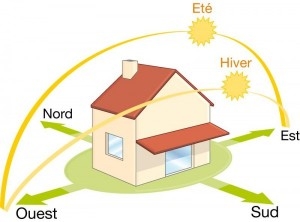
If ever there's a shadow on the panels, a panel or a few panels from the same series, e.g. a chimney, dirt or similar. We already have the panel itself, a system of diodes inside, from 3 to 6 diodes depending on the panel, which will short-circuit the cells of the panel that are in the shade. So we'll still have the cells that aren't in the shade working. Now, if the panel itself doesn't produce enough, we'll use an optimizer. It's a box under the panel that adds Mc4 connections, and this optimizer will ensure that the panel doesn't affect the rest of the panels. So if there's a panel in the shade, the optimizer will adapt the voltage so that it doesn't reduce the power of the other panels that are in full sunlight. That's what a small motor is for, and it's part of the panel connection.
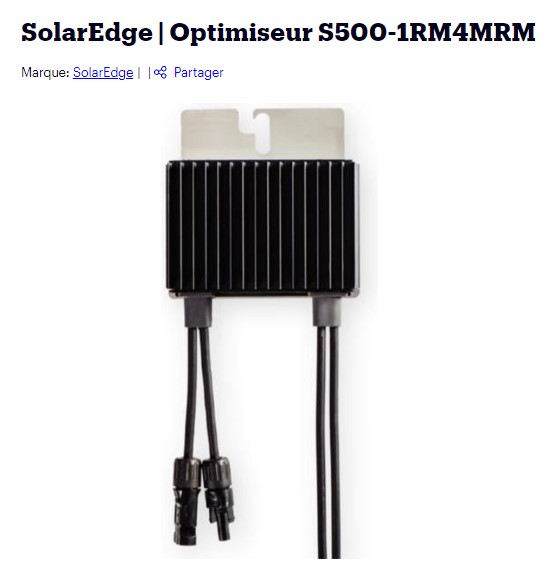
05.
What is the purpose of a microinverter?
A microinverter performs the same task as a conventional inverter, converting direct current (DC) from the solar panels into alternating current (AC). The difference lies in its location directly on each panel, eliminating the need for a centralized inverter. Each panel is equipped with a micro-inverter, optimizing costs by allowing each unit to extract maximum power according to solar luminosity.
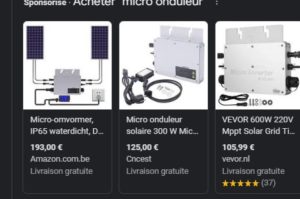 vs.
vs. 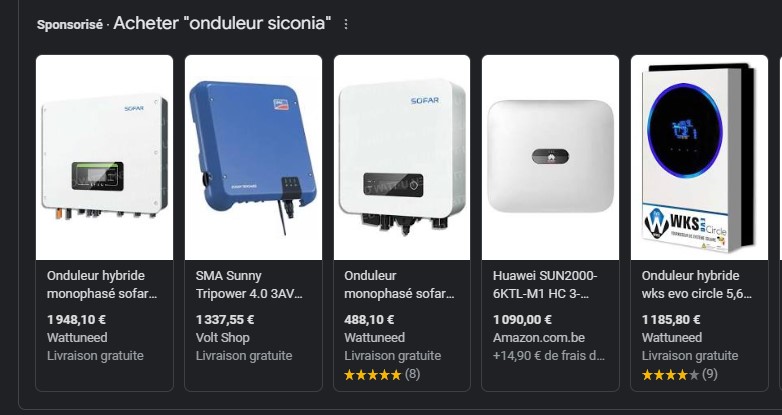
1 large inverter = 10 x the price of a small microinverter
The power of a solar panel depends on its exposure to the sun, so if it's in the shade, it will produce less. However, the microinverter maximizes power for the amount of light received, avoiding the need for a centralized inverter. This solution is particularly practical for small-scale installations, because unlike a centralized inverter, which requires several panels to operate, microinverters theoretically allow a single-panel installation.
However, it is important to note that, Although microinverters offer greater flexibility, they don't necessarily guarantee lower costs. In the event of a problem with a microinverter, the intervention requires dismantling the solar panel, which can be less convenient than the easy access of a centralized inverter located in a cellar, especially in large-scale installations with many panels.
06.
Regulations for ground-mounted solar panels?
To install ground-mounted solar panels, you need to apply to the local authority for planning permission.
Each commune may have its own rules on this subject, which means that there are no uniform regulations, but rather a common requirement to apply for a permit. The specific procedure may vary from one municipality to another, so it is advisable to check with the municipality concerned for details and instructions.
07.
How are solar panels installed on a roof?
The method of installing solar panels on a roof depends on the type of roof:
- Tiled roofs: In general, panels are attached directly to the structure, to rafters or battens (or to beams strong enough to hold the fasteners). If the roof is tiled, we lift the tile, attach a hook to the rafter, replace the tile, then install the rails on the hooks to secure the panels.
- Slate roofs: We use a similar system by removing the slate. You nail a plate, screw a plate into the structure under the slate, then put the slate back on top and fasten like this.
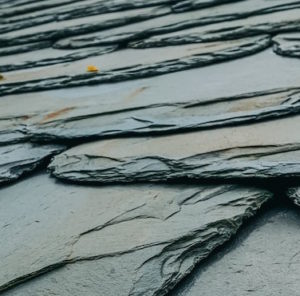
- Steel roofs: For square corrugated sheet metal roofs with corners. Here, the hooks are screwed directly through the steel pan with a rubber-tipped screw. For watertightness, we always aim for the top of the corrugation so that water doesn't run off into the gutter, so that there are no screws where the water actually runs off. So it's watertight. The advantage of fastening directly to the structure is that it's lightweight.

- Flat roofs: On a flat roof, the panels are placed on feet inclined at twelve and a half degrees. These feet are fitted with rubber pads to avoid puncturing the roof membrane. They are weighted with concrete slabs to ensure stability without perforating the membrane, thus avoiding potential leaks. So concrete slabs are laid on metal feet. They are not installed directly on the roof, so the panels are weighted down. They are not fixed through the membrane to prevent leakage. So this ballast is heavy, heavier than a fixing directly into the structure.

- Pitched roofs: On pitched roofs, it's important to ensure that the structure is strong enough. Installation requires around 25 to 30 kilos per square meter of surcharge on residential flat roofs. The advantage of direct structural fasteners is their light weight.

The installation method is adapted to the type of roof to ensure safe and effective attachment of the solar panels.
08.
How do I clean my solar panel?
Cleaning solar panels depends on the type of roof and the inclination of the panels. In general, on sufficiently sloping roofs (above 20 to 25 degrees in Belgium), rain is often sufficient to clean the panels, except in very dusty environments such as near building sites or quarries.
However, if cleaning is necessary, here's how to proceed:
- Cleaning frequency :
- Pitched roofs: Generally, every 3 to 5 years.
- Flat roofs: Also every 3 to 5 years, as water cleans less effectively on less sloping surfaces.
- Cleaning method :
- If you don't want to climb onto the roof, hire a specialist cleaning company.
- Or if you're very good at climbing or feel comfortable doing it yourself, use a microfiber cloth and demineralized water. Avoid chemicals, hard water and tools that could scratch the glass.
- Rub gently with the cloth and demineralized water. The nail can also be used for light scraping.
- Avoid using soap, even neutral soap, as this can leave marks. Choose a soap-free method.
- Beware of thermal shock: Avoid cleaning with hot water in very cold weather, or with cold water in midsummer (solar panels can reach 60°C).
- Ideally, clean the panels at the start of the day when the sun is not yet shining directly on them, to avoid thermal shock.
Solar panel cleaning can be carried out with a few simple precautions, favoring a gentle approach to maintain panel efficiency over time.
09.
Does my inverter need an internet connection?
No, an Internet connection is not required for the inverter to operate.
In fact, the inverter can operate independently of the Internet connection. The presence ofan Internet connection simply enables remote access to production data.
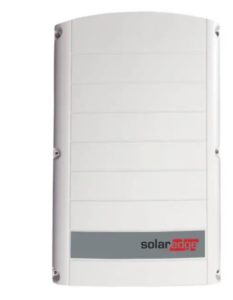
If you don't have Internet access, you can connect directly to the inverter via an Ethernet cable (RJ42) to view production data. So even without the Internet, the inverter operates efficiently.
10.
How do we guarantee the watertightness of your roof for 10 years?
Whether or not your roof is guaranteed watertight for ten years depends on a number of factors:

- If the roof is in good condition, i.e. recent, with a roof covering in sufficiently good condition and an under-roof, we can guarantee watertightness. In this case, the initial condition of the roof is essential.
- If the roof is in poor condition at the base, we cannot guarantee that it will be watertight. That's why we ask that the roof be sufficiently recent.
- An old roof in very good condition can also be considered, but we also check whether the roof is insulated. Before installing solar panels, we recommend prioritizing insulation work. Although insulation isn't always mandatory for all structures (e.g., a barn), it's best to follow a logical order in the work.
- We emphasize the importance of insulation before installing solar panels. If the roof is not insulated and watertight before the panels are installed, we cannot guarantee watertightness. It makes more sense to carry out the work in sequence, to avoid expense and potential delays. Installing solar panels and having to dismantle them in a few years' time to insulate them is a waste of time and money. In short, we guarantee waterproofing if the roof is in good condition, sufficiently recent, and if there is a good under-roof.
11.
How long does a green certificate last?
The validity of a green certificate was 5 years before January 2023 but following the modification of the Green Electricity Decree.
Since 2023, green certificates now have an unlimited lif espan!
We therefore advise our customers to hold on to green certificates as long as possible until the price of the green certificate rises. Speculation is rife, and the floor price guaranteed by ELIA (the high-voltage grid operator in Belgium and Germany) is €65 in 2023, but it was €95 in 2022. That's a difference of €30.
So if you had produced 10 green certificates with your solar panel installation, the difference could be 300€!!!! It depends on how much you need the money, of course!
12.
Do solar panels make sense when renting out a property?
I plan to rent out my property. Are photovoltaic panels still interesting? In all cases, the answer is yes, despite some differences depending on your region.
- À Brussels
As an owner, you benefit from the green certificate scheme for a period of 10 years. In other words, you can benefit directly from the sale of your green certificates. The electricity generated by the solar panels will be used by your tenant (on the principle of self-consumption, read our article here). Your tenant will therefore have a significant advantage in occupying your property, as he or she will see a portion of his or her electricity bill reduced.
What's more, it's important to note that adding solar panels to your property can also influence the home's energy performance certificate (EPB certificate). A higher EPB certificate reflects the property's energy efficiency and can be a selling point to attract tenants concerned about their environmental footprint and energy costs. As a result, you could potentially ask for a slightly higher rent, highlighting the economic and environmental benefits of solar panels.
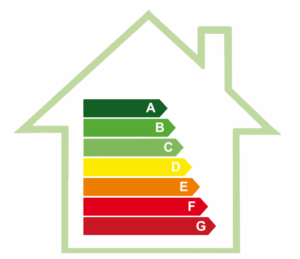
- In Wallonia and in Flanders
As the green certificate scheme no longer applies to new installations in these two regions, the main attraction of a photovoltaic installation lies in the fact that your tenant's electricity bill will be reduced according to the solar electricity produced. This means significant savings compared to renting a property without this advantage. In addition, there is a direct link between the photovoltaic system and the
EPB certificate
certificate of your home, and therefore its value.
13.
Photovoltaic panels and EPB
Like other renewable energy sources, a photovoltaic installation has a direct positive impact on your home's EPB (Energy Performance of Buildings) score.
- Will my house increase in value? The answer is yes. With a lifespan of +/- 25 years, photovoltaic installations generate substantial savings that you or future buyers of your property can benefit from.
- Another point is that the EPB certificate is becoming an increasingly important factor in the decision to buy a home. The photovoltaic installation has a direct impact on the property's EPB rating and should therefore increase its value.
14.
What is self-consumption?
Self-consumption is the amount of electricity generated by your panels that you consume directly.
- If your self-consumption is 0%, that means you don't consume the electricity your panels produce at all. Everything is redistributed on the network.
- If your self-consumption is 100%, that means you consume all the electricity your panels produce.
The greater your self-consumption, the lower your prosumer tax in Wallonia (if you have a smart meter). In Brussels and Flanders (from 01/01/21), you'll benefit from a higher increase in the price of your kWh. Indeed, the average purchase price of a kWh is 23 centimes, while the average resale price is closer to 5 centimes. Consuming electricity rather than feeding it back into the grid means you'll earn 4 times as much!
A recent article has been written on this subject for maximum understanding:
https://soltis.be/news/comprendre-economies-panneaux-solaires-belgique-2023/
15.
Battery compatibility
How compatible are batteries and storage systems?
Storage systems linked to electric batteries exist today. However, these are still very expensive, and their costs cannot be recouped over the entire life of the battery. It is therefore not yet worthwhile to undertake this type of investment at this time.
On the other hand, inverters sold today are compatible with the future installation of batteries. It may therefore be worth waiting a few years before considering the purchase of a battery for your existing photovoltaic system. Battery prices are falling sharply, so it's only a matter of time before they become profitable.
16.
How can we contribute to the energy transition?
Years of carbon-free electricity generation.
According to the International Energy Agency(IEA), it takes between 2 and 3 years for a solar panel to generate the energy required to produce it. This figure is constantly falling, thanks to the ongoing development of panel performance. Given that the lifespan of an installation is between 25 and 30 years, that's as many years of carbon-free energy production. A real boost for the climate!
What's more, as Greenpeace details in this article, "... panels are 95-99% recyclable for most manufacturers. Whether they were built in China or Europe..."
17.
What are the 3 parameters that influence the profitability of my photovoltaic system?
Three parameters influence the profitability of your installation:
1. Price per Watt-Peak
Himself influenced by:
- The size of your plant: the rule is simple, the larger the plant, the greater the economies of scale. There are many fixed costs associated with installation (workers' travel, inverter, rental of a gondola, etc.). An installation with more panels will therefore be cheaper per Watt Crete installed, and therefore more profitable.
- Panel type
- Inverter type
- The distance between the inverter and the panels: if the panels are placed outside your home (e.g. a ground structure in the back of the garden), trenching work will have to be taken into account. And the greater the cable distance, the greater the cable diameter. This increases the price per Watt-peak.
2. The orientation and inclination of the panels, as well as their geographical location.
A south-facing panel produces more than an east- or west-facing panel. It makes perfect sense. Depending on the orientation and inclination of a panel, a 'producible' can be determined. Productivity is the number of kWh produced per kWp installed. In Brussels, this can vary from +/-1,050 kWh/kWp for an optimal situation at 30° South, to 850 kWh/kWp for a situation at 30° East-West. A loss of only 20% in the worst case.
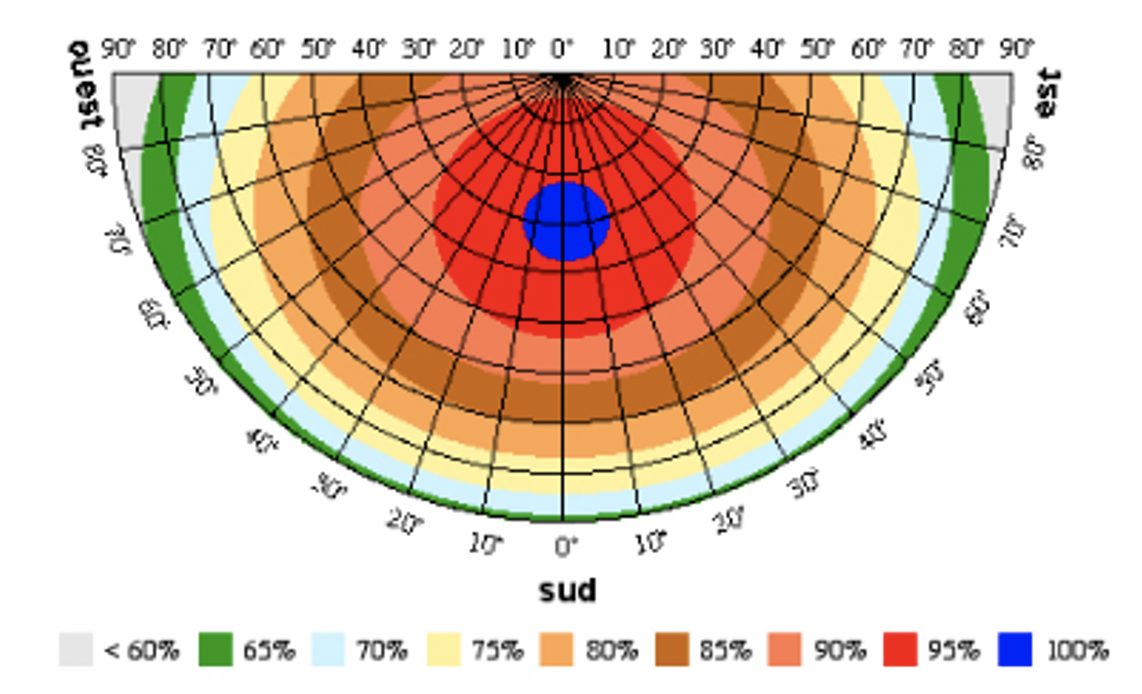
3. The region
This is the most important criterion, along with the size of the installation. In fact, the region in which you carry out your project has a direct influence on the grants you receive.
- Brussels: 3 to 6 years return on investment and 12 to 25% annual financial return
- Wallonia: 5 to 10 years' return on investment and 10 to 20% annual financial return.
- Flanders: 7 to 10 years' return on investment and 7 to 15% annual financial yield.
18.
How can I control my production?
How can I monitor or control my production?
Whether you opt for a SMA or SolarEdge inverter system, you can benefit from a tool for controlling and monitoring your installation. They allow you to view your panel production in real time and access detailed information. It looks like this:

Here's a dashboard of a residential solar panel installation located in Brussels-North in production during the year 2022 with 23 panels.
These technologies are available on most inverters, so don't hesitate to ask us for more information.
19.
What if I have a dual time meter?
Do you have a bi-hourly meter and are wondering about its impact on your photovoltaic system?

In the case of an installation linked to a meter that runs back wards (in the Walloon region for installations of -10kVA), two situations may arise:
- Your installation produces less than your annual consumption on your day meter. In this case,
there's no point in changing your two-hour meter
. The balance on your Jour meter will be positive at the end of the year, meaning that you will have benefited from 100% of the green electricity you produced. What's more, you'll still benefit from a reduced rate for the Night phase of your meter. - Your installation produces more than your annual consumption on your day meter. In this case, the balance on your day meter will be negative at the end of the year, earning you nothing. What's more, your Night meter will always count your consumption positively, with no transfer between the two meters.
It's in your interest to install a single-hour meter.
.
In the case of a meter that does not run in reverse (in the Brussels and Flemish regions for -10kVA installations and in the Brussels, Walloon and Flemish regions for +10kVA installations) :
- Your meter is working properly. That is, it will turn positive if you consume electricity from the grid (when your panels produce less than you consume). But it will never turn negative when you inject electricity into the grid. This electricity will be sold to your energy supplier at a lower price than the electricity purchase price.
So it's in your interest to keep a two-hour meter
to benefit from the reduced rates of the Night meter. Since your panels don't produce when the sun is down, you'll be using electricity from the grid in any case.
SIBELGA, the Brussels electricity grid operator, is now mandatorily installing the new digital meters in the Brussels region.
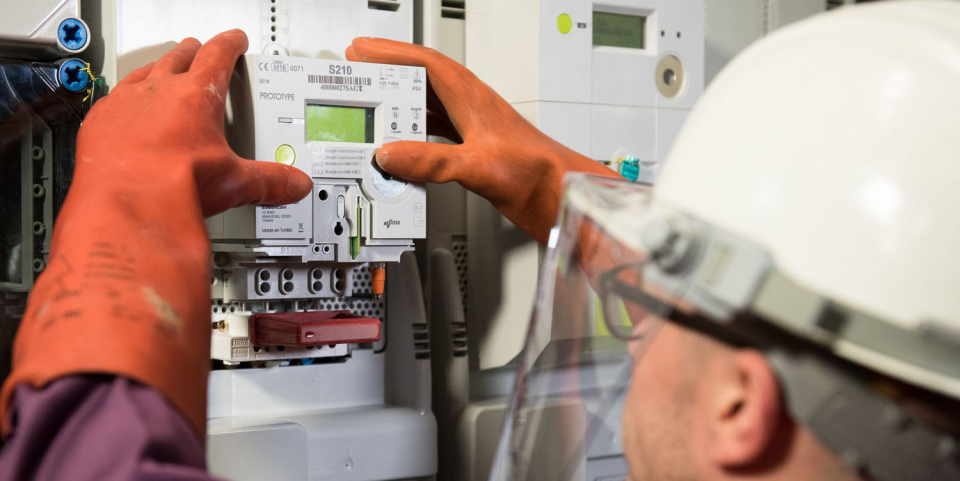
20.
What are the main photovoltaic units of measurement?
The main units of measurement in photovoltaics are the watt-crete (Wp) and the kilowatt-hour (kWh).
Watt-peak (W p): the maximum electrical power that can be produced by a photovoltaic device under standard sunlight conditions. These conditions correspond to:
- An irradiance of 1,000 W/m2
- A spectral distribution of radiation known as AM 1.5, corresponding to solar radiation reaching the ground after passing through an atmosphere with a mass of 1 kg at an angle of 45°.
- The panels are positioned to capture the maximum amount of radiation (their plane is perpendicular to the direction of the source of direct radiation).
- A panel temperature of 25 °C
Kilowatt-hour (kWh ): this corresponds to the energy consumed by an appliance with a power of 1 kilowatt that has been in operation for one hour (1 kilowatt × 1 hour).
21.
How do I size the inverter for my system?
The optimum inverter load (power in kWp of the panels/power in kVA of the inverter, in %) is between 100 and 130%.
- Below this level, the inverter won't start if the panels don't produce a defined minimum output. System losses are therefore to be deplored.
- Beyond that, clipping begins to occur.
22.
Do I have to change my electricity meter before installing panels?
The answer depends on the region you're in.
In Brussels, the law specifies that a meter cannot be turned upside down. Self-generation plants therefore require a bidirectional meter, also known as an A+ A- meter, to measure separately the energy taken from the grid and any surplus reinjected. Changing your meter has been free since January 2020.
In Wallonia, your meter must be able to turn backwards. Check this information with your grid operator. In most cases, no modifications are required.
In Flanders, from January 1, 2021, the meter will no longer run backwards. It will therefore be necessary to change the meter when you install panels.
23.
What types of roof can I install panels on?
Most roofs are suitable for photovoltaic panels.
You will find below a table summarizing the feasibility according to your type of roof:
| Roof type | Feasibility |
| Steel tray | yes |
| Tile | yes |
| Zinc roofing | yes |
| Corrugated sheets | yes |
| Slate | yes |
| Flat roof | yes |
| Ground structure | yes |
| Pitched roofing | no |
Warning: it is forbidden to work on roofs containing asbestos!
24.
What is a green certificate?
Green certificates are one of the sources of income generated by your photovoltaic installation.

When you produce solar-generated electricity, you generate securities called 'green certificates'. These securities can then be resold to various players. These players include energy suppliers, who are obliged to purchase a certain number of green certificates each year.
An analogy would be a stock market share, because the green certificate is saleable but can vary in value according to the prevailing market price.
It's also important to understand that the green certificate doesn't take away from your electricity production. So it's still true that :
-
You consume your own electricity, reducing your dependence on the grid.
-
You can resell your surplus energy to suppliers (Total Energie, Luminus, etc.).
For private customers, only the Brussels region still grants green certificates for new installations, for a period of 10 years from the date of commissioning. A downward revision of the scheme comes into force on January 1, 2021, and will see the introduction of facility categories (based on size) with a different regime depending on the category. After 01/01/2021, the scheme will be slightly less attractive, but will still make your installation very profitable.
We've written a much more detailed article with the latest news on green certificates in 2023 and 2024. There was a balancing act. We invite you to read it without moderation!
Link
h ttps://soltis.be/news/certificats-verts-bruxelles-2023-2024/
25.
What is the prosumer rate?
What is the prosumer tariff?
The prosumer tariff is a charge designed to make solar panel owners contribute to the cost of managing the electricity distribution network. Previously, the system passed on these charges to users who didn't have solar panels, or to those whose solar-generated electricity didn't cover their overall consumption.
The new government announced that the new 'prosumer' tariff (producers/consumers) would be postponed until 2025. This was without taking into account the intervention of the CWaPE, which challenged this political decision.
However, an agreement seems to have been reached between the partners of the government majority. The Walloon government will take over the prosumer tariff in 2020 and 2021. Then, 54% of the amounts linked to compensation in 2022 and 2023. In addition, the Walloon government, wishing to encourage self-consumption by households, should cover the cost of changing to a dual-flow meter.
Prosumer rates by region
-
Brussels: No prosumer tariff applies, as the network costs associated with the purchase of electricity are already covered.
-
Wallonia: The prosumer tariff applies.
-
Flanders: The prosumer tariff will no longer apply from January 1, 2021.
26.
How does it work and how profitable is it in different regions?
The profitability of your photovoltaic panels is generated by different sources of income, depending in part on the region in which the installation takes place.
Please read the article we've concocted with our engineers to give you a clearer understanding of profitability:


